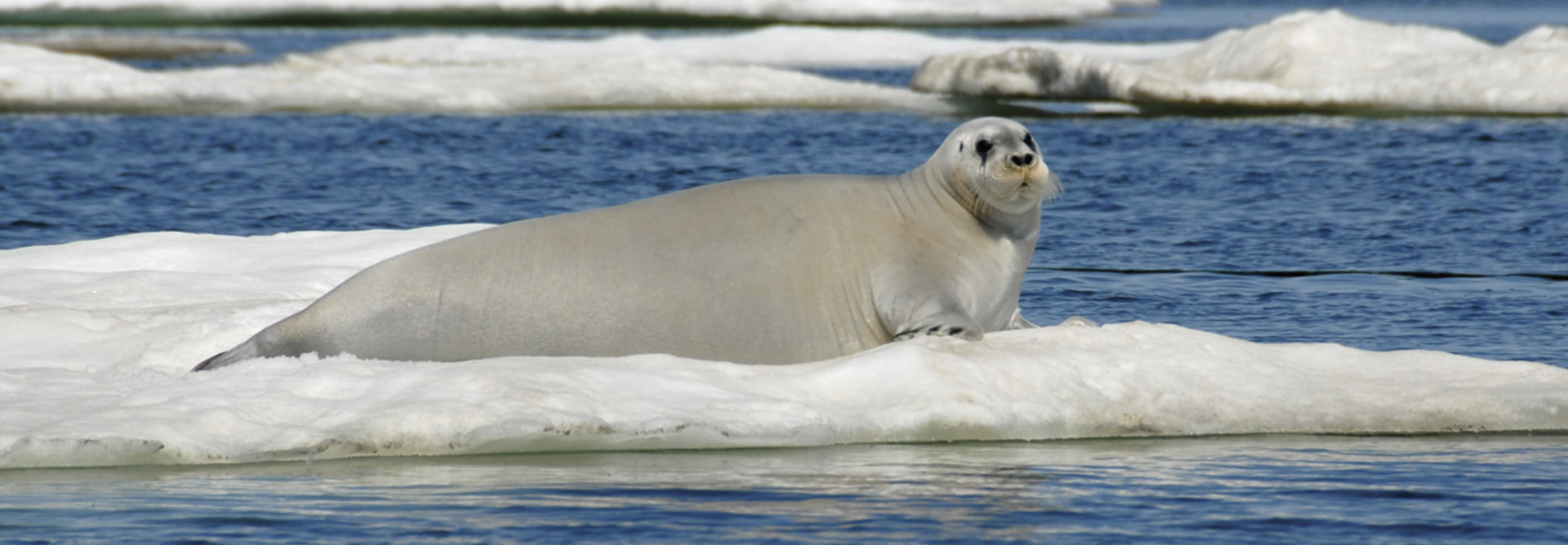How AI Tools and Cloud Can Aid NOAA Scientists
The partnership had its genesis in an experience Erin Moreland, a research biologist in NOAA’s Marine Mammal Laboratory, had in 2018 during jury duty.
When Moreland set out to become a research zoologist, “she envisioned days spent sitting on cliffs, drawing seals and other animals to record their lives for efforts to understand their activities and protect their habitats,” according to the blog post.
However, she wound up spending hours sifting through thousands of aerial photographs of sea ice as she looked for animal life in Alaskan waters. By the time she had finished each survey, the information was outdated. She wanted a better way to do her work.
“Scientists should be freed up to contribute more to the study of animals and better understand what challenges they might be facing,” she says in the blog post. “Having to do something this time-consuming holds them back from what they could be accomplishing.”
While serving on a jury two years ago, Moreland overheard two fellow jurors discussing AI during a break in the trial, and she began talking with them about her work. One of them connected her with Morris, who suggested Moreland pitch the problem as a challenge that summer at the company’s hackathon. Eventually, 14 Microsoft engineers signed up to work on the problem.
“Moreland’s project combines AI technology with improved cameras on a NOAA turboprop airplane that will fly over the Beaufort Sea north of Alaska this April and May, scanning and classifying the imagery to produce a population count of ice seals and polar bears that will be ready in hours instead of months,” the Microsoft blog post notes.
The issue is that, while there are machine learning models that can recognize people in images, there were none that could find seals, especially in real time in aerial photography. However, the hundreds of thousands of examples NOAA scientists had classified in previous surveys helped Microsoft technologists train the AI models to recognize which photographs and recordings contained mammals and which didn’t.
Cloud computing tools from Microsoft will help NOAA process all of that data.
“Part of the challenge was that there were 20 terabytes of data of pictures of ice, and working on your laptop with that much data isn’t practical,” Morris says in the blog post. “We had daily handovers of hard drives between Seattle and Redmond to get this done. But the cloud makes it possible to work with all that data and train AI models, so that’s how we’re able to do this work, with Azure.”
READ MORE: Find out about NOAA’s strategic cloud and AI plans.
NOAA Aims to Take Advantage of Tech to Advance Its Mission
Morris tells Federal News Network that Microsoft has taken all that data NOAA collected on flights in 2016 and that NOAA scientists had already put all that time in to labeling. The goal is to train the machine learning models to annotate the images so that humans do not have to. The other aim is to “run these AI models on the plane instead of back at home base.”
“Then, hopefully you could come back with only mostly interesting images and never even store all those extra images in the first place,” Morris tells Federal News Network. “Which not only gives you fewer images to deal with, but hopefully lets you move eventually to a paradigm where you can take many, many more flights on unmanned aircraft and really scale your ability to collect data, not just save people time, which is really important, but scale your ability to collect it in the first place.”
Meanwhile, a colleague of Moreland’s, Manuel Castellote, a NOAA affiliate scientist, will use a similar algorithm to analyze the recordings he’ll pick up from equipment scattered across the bottom of Alaska’s Cook Inlet.
Castellote’s work will allow him to quickly decipher how the shrinking population of endangered belugas spent its winter, according to Microsoft. The data will be confirmed by scientists, analyzed by statisticians and then reported to people such as Jon Kurland, NOAA’s assistant regional administrator for protected resources in Alaska.
Kurland’s office oversees conservation and recovery programs for marine mammals in Alaska and its waters and helps advise all the federal agencies that issue permits or carry out actions that could affect animals that are threatened or endangered.
The office also issues recommendations to “help mitigate the impact of human activities such as construction and transportation, in part by avoiding prime breeding and feeding periods and places,” the blog post notes.
However, those initiatives have been hurt by a lack of timely data. “There’s basic information that we just don’t have now, so getting it will give us a much clearer picture of the types of responses that may be needed to protect these populations,” Kurland says in the blog post. “In both cases, for the whales and seals, this kind of data analysis is cutting-edge science, filling in gaps we don’t have another way to fill.”











